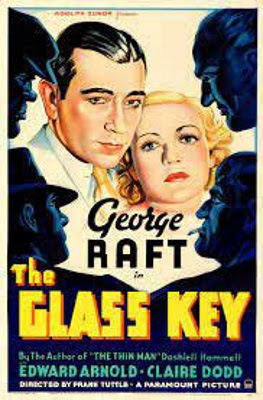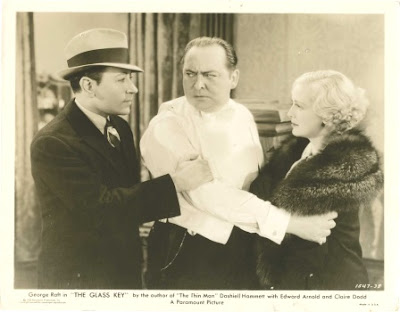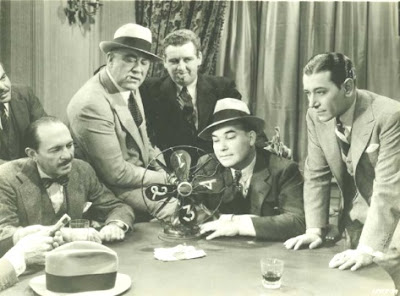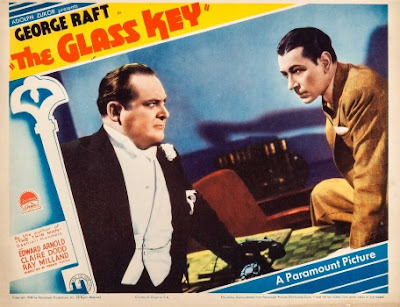The Glass Key

Director: Frank Tuttle
Year: 1935
Rating:
6.0
This
was the first adaptation of the Dashiell Hammett novel of the same name from
1931. They were to produce another much better-known version a mere seven
years later when Paramount realized they still had the right to the book
and had these two kids on their payroll who had done alright in This Gun
for Hire. That is the big difference between these two versions. With Veronica
Lake they wisely increased her role in the film and enhanced the relationship
between her and Beaumont (Alan Ladd). Which in fact was closer to the book.
In this one there are no sparks between the Lake character and George Raft
- and he ends up going out at the end with Madvig's daughter. Which strikes
you as strange since he treated her as a kid throughout the film. This did
pretty well at the box office and Raft was on a hot streak as a main tough
guy in Hollywood. Forgotten was his background as a song and dance man. he
was a gangster now. He is fine in this - not yet overly protective of his
image of a tough guy who came out on top and later refusing both High Sierra
(I don't play guys who die in the end) and The Maltese Falcon (It's a B movie
with a first time director).

This whizzes through the book, hitting most
of the main points. Beaumont (Raft) is the right-hand man to Paul Madvig
(Edward Arnold) who runs this small town. It is as corrupt as a sewer but
Madvig shares the proceeds with lots of folks and is well-loved. He has run
the town for years getting everyone elected and in his pocket. Arnold plays
him with a nice amount of joviality mixed with toughness. He is madly in
love with the daughter of the man he has put up as Senator. She (Claire Dodd)
wants nothing to do with him but has to play nice for her father. The brother
in the family (Ray Miland) is a smarmy spoiled rich kid who gets in debt
to the gambling syndicate and borrows money off of Opal - daughter of Madvig.
Don't get used to him because he is found dead on the sidewalk and the film
takes a turn into a mystery as Madvig is suspect number one.

The 1942 version is only ten-minutes longer
but feels so much fuller than this film. One scene they both have in common
is the famous beating scene. Beaumont is captured by the rival gang and taken
to a shabby room where a thug beats the hell out of him. Guinn Big Boy Williams
isn't bad in this role but Bendix takes it to another level in the 1942 version
with his sadistic cruelty. It was hard to look at Life with Riley in quite
the same way. After the 1942 version came out and was critically acclaimed
as the great film it is, this one was put into storage but over the past
few years it has gained a better reputation. It is a gritty good film sheared
of the romance and a few scenes of the other version. Director Frank Tuttle
just sticks to the facts. Nothing fancy though he gives us hints of noir
to come.




